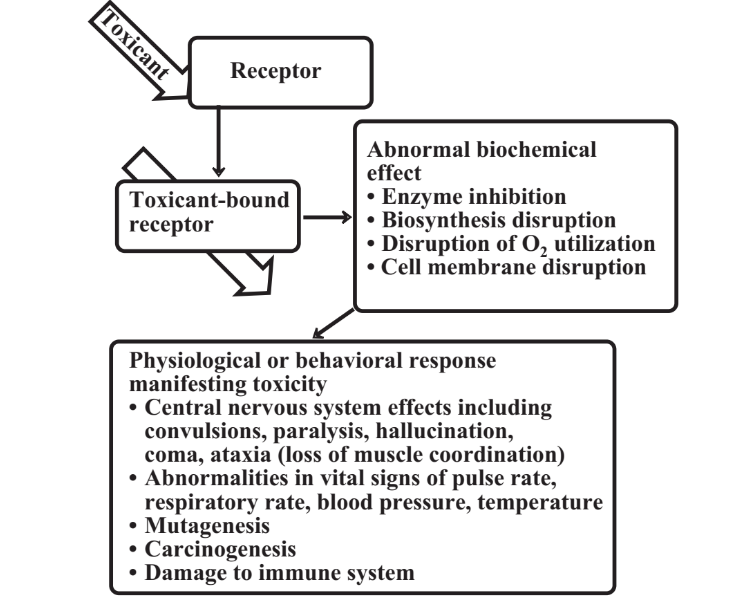16.5: Toxic Chemical Attack
- Page ID
- 285402
Other than nuclear weapons, chemical and biological agents (pathogenic microorganisms) have more potential than any other mode of attack to debilitate and kill victims. Not the least of these effects is their ability to spread fear and terror among potential victims. Most of what is known of the potential of chemical and biological agents to harm and terrorize people has been learned from their use and preparation for use in warfare as summarized in a book on the history of weapons of terror.3
Chemical and biological agents have been used for centuries by civilizations around the world that have poisoned water supplies and employed diseased animals and human bodies, incendiary materials, poison-tipped arrows, and even venomous snakes to attack their enemies. Modern chemical warfare normally is considered to date from the use of toxic chlorine gas by the German army in an attack at Ypres, Belgium, during World War I in 1915 causing 7,000 to 15,000 casualties. The British used chlorine five months later in the Battle of Loos, but suffered 2,000 casualties when a change of wind blew the gas back over their own lines. The use of chemical agents continued throughout the war and, in addition to physical damage that was done, contributed to psychological stress and the need to implement cumbersome protective measures and logistics. The Geneva Protocol of 1925 banned the use of chemical and biological agents in warfare, although before, during, and after World War II nations continued development of these means of attack.

The next large scale use of chemical weapons took place in the 1980-1988 war between Iraq and Iran in which Iraq employed approximately 1,800 tons of blistering agent mustard gas and 140 and 600 tons respectively of nerve gas sarin and Tabun causing an estimated 30,000 casualties. Toward the end of this conflict Iraq killed and injured thousands of people with chemical agents in quelling a Kurdish rebellion. Fear of missile-launched chemical attack by Iraq was a major concern during the war that followed Iraq’s 1990 invasion of Kuwait. Suspected possession by Iraq of such “weapons of mass destruction” was cited as justification for the 2003 invasion of Iraq by the U.S.
Biological warfare agents are regarded as having significantly more potential than chemical agents for inflicting casualties. This is because of the ability of pathogens to propagate and afflict far more people than those exposed in the initial attack.
Chemical and biological agents are probably more effective for terrorist attacks against civilians than they are for warfare. Civilian targets are generally less likely to have protective measures in place, are more subject to surprise attack, and can be attacked in enclosed areas with relatively unsophisticated means. As exemplified by the October 2001 anthrax bacteria attack on several targets carried out through the U.S. Postal Service, which caused 22 cases of the disease and killed 5 people, panic fueled in part by intense media attention can cause widespread panic and disruption, always the goal of a terrorist attack.


